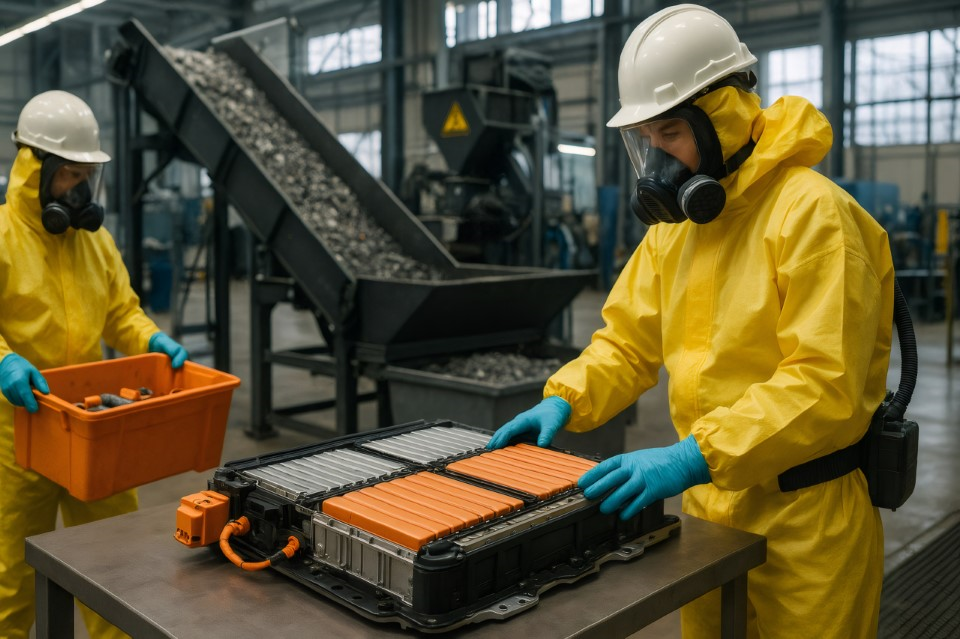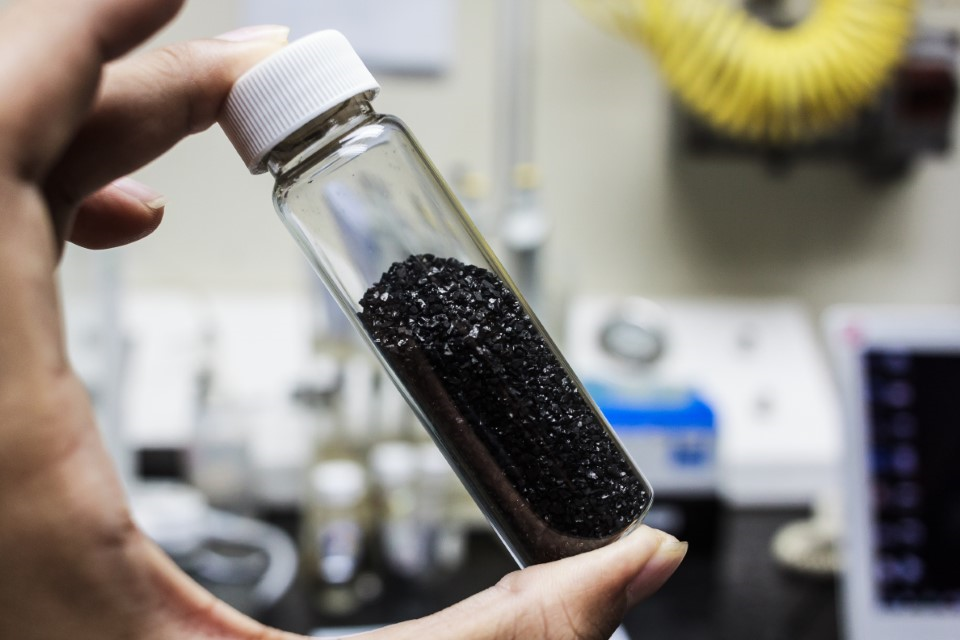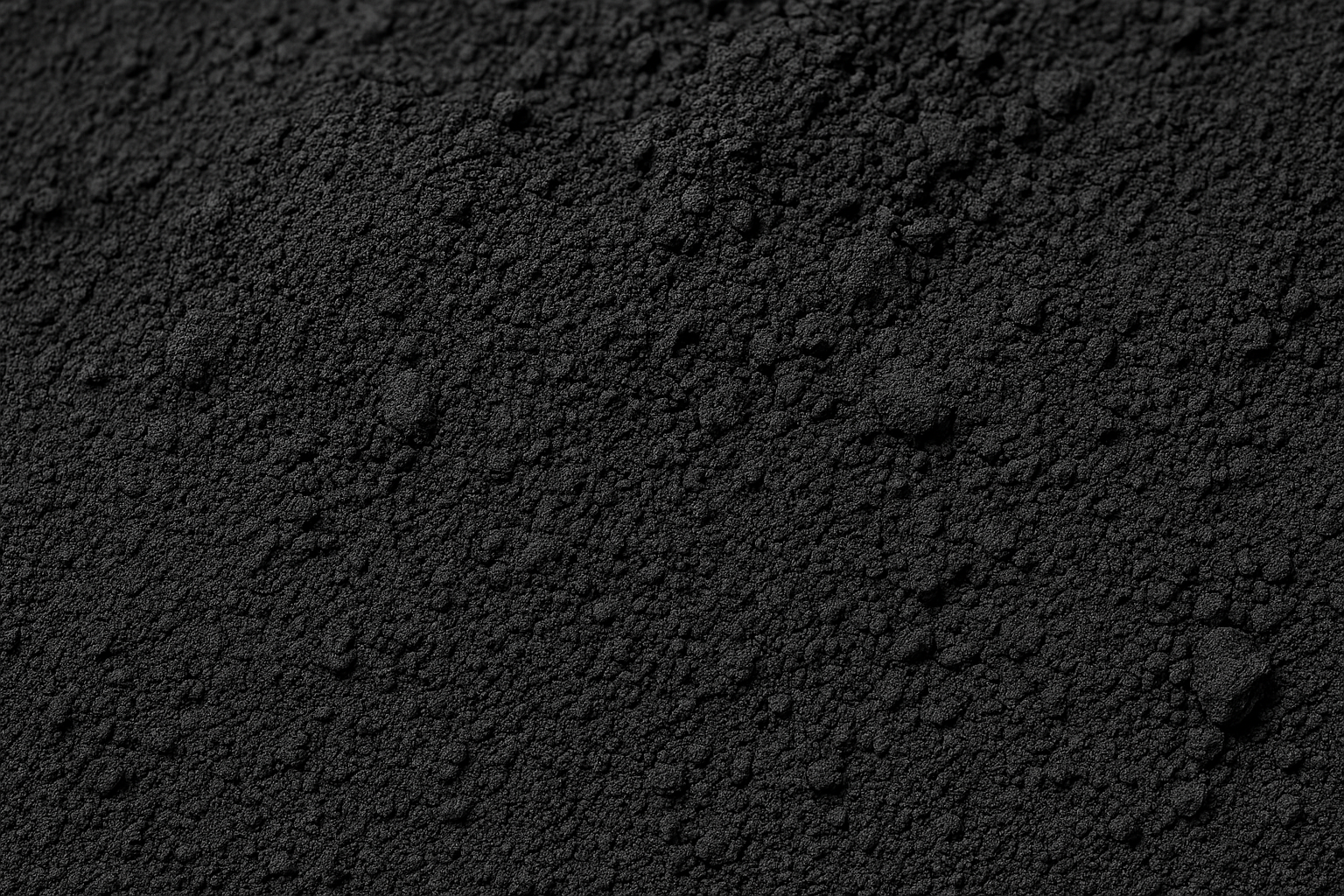This article is part of Orbia’s Megatrendsetters series, which explores how Orbia’s solutions address the transformative forces—“megatrends”—that are reshaping our world, from decarbonization and the circular economy to shifting supply chains and agribusiness to global water and digitalization. To learn more about ReGen or join the program, visit the Orbia Fluor & Energy Materials website here or contact us at fem.batteries@orbia.com.
 Used EV batteries are collected in recycling facilities and shredded to extract key metals leaving black mass residue. Orbia purifies the black mass to recover pure graphite.
Used EV batteries are collected in recycling facilities and shredded to extract key metals leaving black mass residue. Orbia purifies the black mass to recover pure graphite.
Despite its name, a lithium-ion battery contains significantly more graphite than lithium. In fact, graphite makes up about 30% of a lithium-ion battery’s weight. An average EV with an 80-kilowatt-hour battery contains nearly 80 kilograms of graphite—more than the weight of an average person.
Essential to the battery charging process, graphite is used in the anode to store lithium ions. With demand for EVs, renewable power storage and digital devices soaring, graphite is an indispensable building block of the clean energy transition.
A Looming Supply Chain Crisis
Today graphite faces a critical supply/demand imbalance: it’s projected that by 2035, global graphite demand is expected to outpace supply by roughly 2.5 million tons. Compounding the challenge is that the current supply chain is fully dependent on China. In 2023, 79% of natural graphite and 97% of synthetic graphite was produced by China.
The risks to the current supply chain threaten the pace of electrification and clean energy deployment worldwide. To meet growing demand and reduce geopolitical exposure, the world urgently needs new, sustainable sources of graphite.
The Case for Graphite Recycling
Today, most graphite from spent batteries is landfilled or incinerated, wasting valuable material and generating significant carbon emissions. By 2030 it’s estimated that more than 260,000 tons of graphite could be available for recycling each year, representing a $2.6 billion market opportunity.
Recycled graphite offers a significantly lower environmental footprint compared to both natural and synthetic graphite. Natural graphite requires mining, grading and extensive processing, while synthetic graphite—made from petroleum byproducts—is produced via high temperature graphitization (up to 3,000°C), consuming massive energy and emitting substantial CO₂.
Unlike cathodes, which can vary by chemistry, graphite remains an irreplaceable anode in today’s batteries. To meet demand sustainably, the industry must move beyond mining and energy-intensive production—and embrace recycling as a critical path forward.
 Orbia produces ultra high purity upcycled graphite indistinguishable from pristine graphite.
Orbia produces ultra high purity upcycled graphite indistinguishable from pristine graphite.
Orbia’s Breakthrough in Graphite Recycling
Orbia’s Fluor & Energy Materials business has developed a proprietary process to recover, purify and upcycle graphite from domestic sources. The technology treats graphite recovered from “black mass residue,” which is the powder left after used batteries are shredded, and metals like lithium, nickel and cobalt are extracted. Through a multi-step approach, Orbia uses hydrofluoric acid to purify recovered graphite so that it can meet strict physical and chemical anode specifications. Orbia’s process produces ultra high purity upcycled graphite indistinguishable from pristine graphite.
A key differentiator of Orbia’s technology is its economic viability. Historically, recycling graphite has been cost prohibitive due to its lower value compared to other battery materials like lithium, nickel and cobalt. Orbia’s breakthrough enables recycled graphite to compete on cost with virgin material, while delivering the added value of a lower carbon footprint. In fact, initial estimates from Orbia’s sustainability team determined that Orbia’s recycled graphite may produce up to 4x less CO₂ than synthetic graphite and up to 2x less CO₂ than mined natural graphite.
To accelerate commercialization, Orbia is developing a fully circular model by working directly with major OEMs and cell producers to upcycle graphite and return it back into their supply chain to be used for batteries and other automotive applications to help them achieve their net zero targets.
The global market opportunity for recycled graphite is immense, driven by the urgent need to reduce carbon footprints as the automotive industry undergoes electrification and accelerates toward net zero targets. With demand for graphite rising sharply, supply concentrated in a single region and growing pressure to decarbonize supply chains, Orbia’s technology provides a solution that addresses both economic and environmental challenges. By enabling large-scale graphite recycling, this innovation has the potential to transform the battery industry—enhancing resilience, advancing circularity and supporting sustainable long-term growth.
